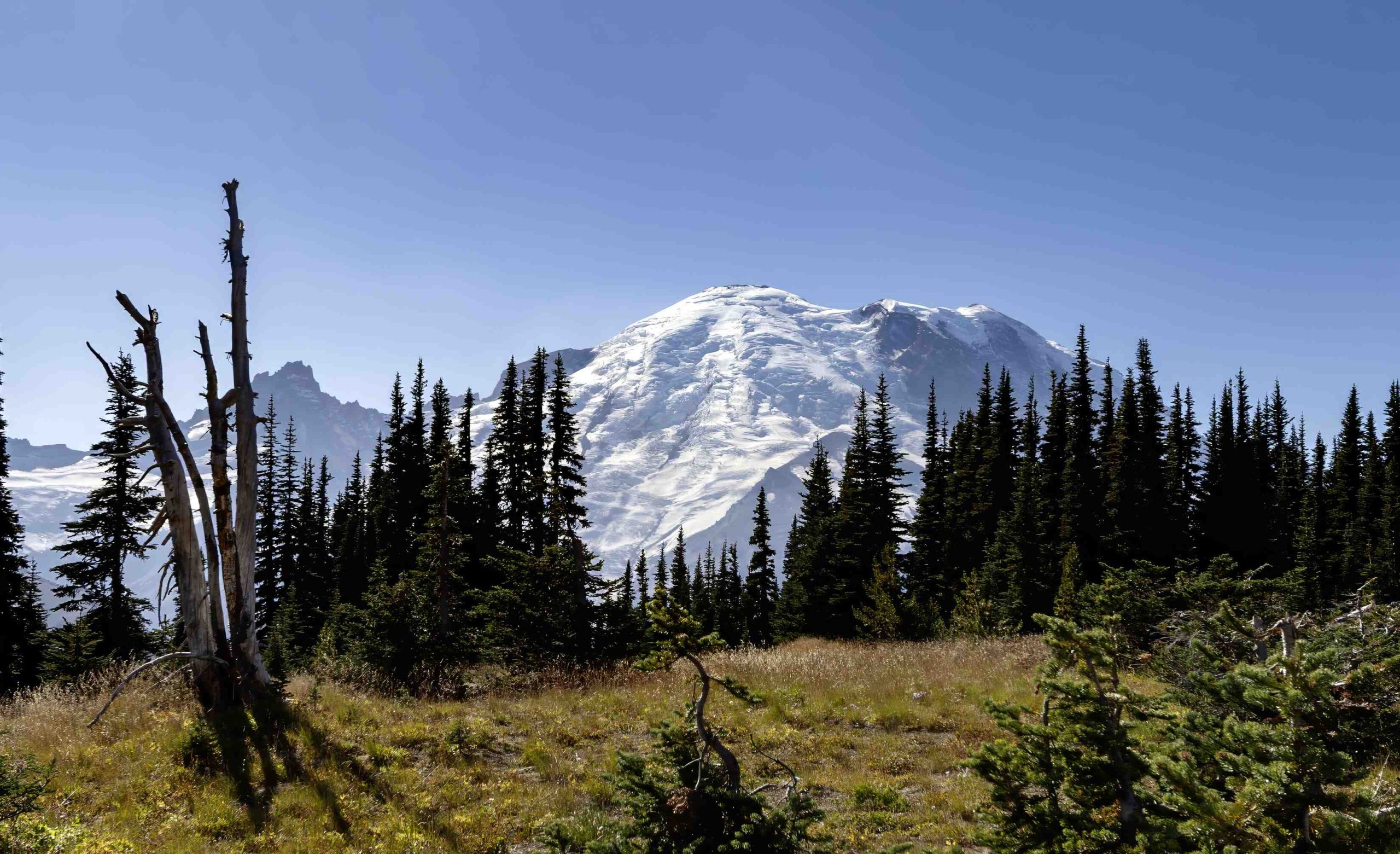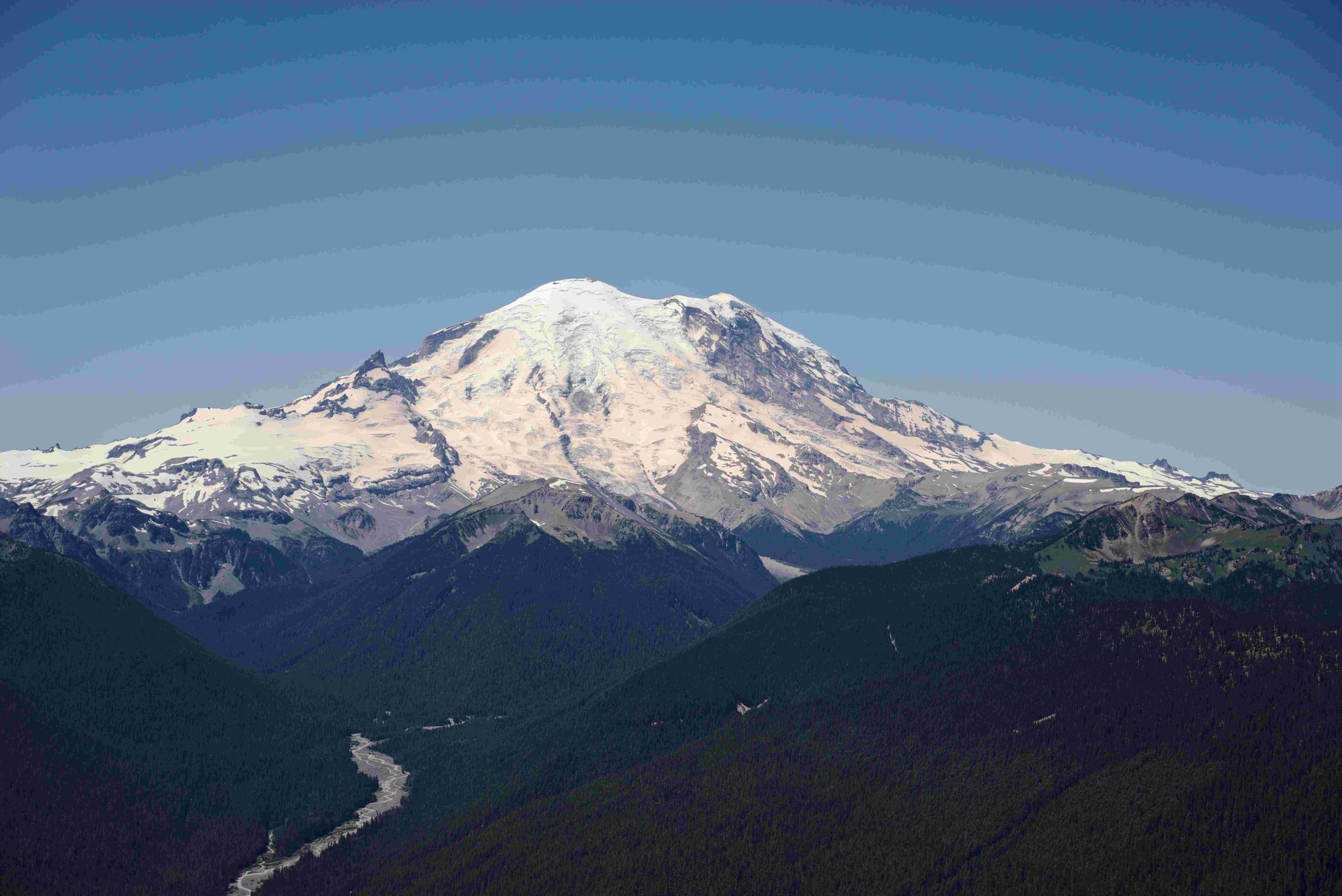Mount Rainier from the West Coast offers a breathtaking experience for nature enthusiasts and adventure seekers. This iconic stratovolcano, standing at 14,411 feet, is the centerpiece of Mount Rainier National Park in Washington State. Accessible from major West Coast cities like Seattle and Portland, Mount Rainier provides diverse landscapes, from lush forests to alpine meadows and glacial peaks. Visitors can enjoy scenic drives, hiking trails, and stunning viewpoints that showcase the mountain’s majestic beauty and surrounding ecosystems.
What Are the Best Viewpoints for Mount Rainier from the West Coast?

Experiencing Mount Rainier’s grandeur begins with finding the perfect vantage point. Here are some of the most spectacular viewpoints:
- High Rock Lookout
- GPS: N 46° 41′ 03.624″, W 121° 54′ 06.3828″
- Features: 360-degree views, historic 1929 lookout cabin
- Hike: 1.6-mile moderately steep trail
-
Best for: Sunrise photography, zoom lens shots
-
Tipsoo Lake
- GPS: 46.8691° N, 121.5175° W
- Features: Wildflowers, fall foliage, reflective lake surface
- Accessibility: Easy access from Chinook Pass
-
Best for: Seasonal photography, family-friendly visits
-
Paradise Valley
- GPS: Approximately 46.7873° N, 121.7367° W
- Features: Wildflower meadows, close-up mountain views
- Activities: Various hiking trails, visitor center
- Best for: Summer wildflower displays, glacier views
How to Reach Mount Rainier from Major West Coast Cities?

From Seattle to Mount Rainier
- Nisqually Entrance Route
- Directions: I-5 South → SR-512 East → SR-7 South → SR-706 East
- Travel Time: Approximately 2 hours
- Distance: About 85 miles
-
Note: Check road status for closures
-
White River/Sunrise Area Route
- Directions: I-90 East → SR-410 → Chinook and Cayuse Passes
- Travel Time: Approximately 2.5 hours
- Distance: About 100 miles
- Note: Seasonal closures due to snow
From Portland to Mount Rainier
- Nisqually Entrance Route
- Directions: I-5 North → SR-512 East → SR-7 South → SR-706 East
- Travel Time: Approximately 3.5 hours
- Distance: About 200 miles
-
Note: Check road status before travel
-
Ohanapecosh Area Route
- Directions: I-5 North → US-12 East → SR-123 North
- Travel Time: Approximately 4 hours
- Distance: About 220 miles
- Note: Tunnel height limit on SR-123 is 13′ 1″
What Day Trip Options Are Available from Seattle?
For those based in Seattle, several day trip options provide convenient ways to experience Mount Rainier:
- Guided Tour Packages
- Departure: Typically around 7:00 AM
- Return: Evening (approximately 12-hour duration)
- Cost Range: $100 – $200 per person
-
Inclusions: Transportation, guided hikes, educational talks
-
Mount Rainier National Park Day Tour
- Duration: Approximately 12 hours
- Cost: Around $150 per person
-
Highlights: Paradise Valley, Tipsoo Lake, guided hike
-
Private Mount Rainier Tour
- Duration: 10-12 hours
- Cost: $250 – $300 per person
- Features: Customizable itinerary, focus on photography or specific interests
What Weather Conditions Can Visitors Expect at Mount Rainier?
Understanding the weather patterns is crucial for planning a visit to Mount Rainier:
| Season | Average High Temperatures | Weather Characteristics |
|---|---|---|
| Summer (Jun-Aug) | 60-70°F (15-21°C) | Clear skies, wildflower blooms |
| Autumn (Sep-Oct) | 50-60°F (10-15°C) | Fall foliage, possible snow at higher elevations |
| Winter (Nov-Mar) | Below freezing | Significant snowfall, road closures |
| Spring (Apr-May) | 40-50°F (4-10°C) | Snow at higher elevations, wildflowers in lower areas |
Important Weather Advisories:
– Always check the park’s official website for current road status and alerts
– Be prepared for rapid weather changes, especially at higher elevations
– Carry appropriate gear and clothing for varying conditions
What Are the Must-See Attractions at Mount Rainier National Park?
- Paradise Area
- Famous for wildflower meadows
- Henry M. Jackson Visitor Center
-
Numerous hiking trails for all skill levels
-
Sunrise Visitor Center
- Highest point in the park accessible by vehicle
- Panoramic views of surrounding valleys and mountains
-
Interpretive exhibits on park ecology
-
Reflection Lakes
- Iconic mirror-like views of Mount Rainier
- Popular spot for photographers, especially at sunrise and sunset
-
Easy access from Paradise Road
-
Wonderland Trail
- 93-mile trail circling Mount Rainier
- Showcases diverse ecosystems and landscapes
-
Popular for section hikes and thru-hikes (permit required)
-
Grove of the Patriarchs
- Ancient forest with trees over 1,000 years old
- Easy 1.5-mile loop trail
- Suspended bridge over Ohanapecosh River
How Can Visitors Prepare for a Trip to Mount Rainier?
- Park Passes and Permits
- Purchase entrance pass in advance
-
Obtain necessary permits for backcountry camping or climbing
-
Gear and Clothing
- Layer clothing for changing weather conditions
- Sturdy hiking boots for trails
-
Rain gear, even in summer
-
Safety Precautions
- Carry plenty of water and snacks
- Bring a map and compass (don’t rely solely on electronic devices)
-
Inform someone of your hiking plans
-
Respect Wildlife and Nature
- Follow Leave No Trace principles
- Keep a safe distance from wildlife
- Stay on designated trails to protect fragile ecosystems
By following this comprehensive guide, visitors from the West Coast can fully appreciate the majestic beauty of Mount Rainier while ensuring a safe and memorable experience. Whether you’re a day-tripper from Seattle or planning a longer stay from Portland, Mount Rainier offers a wealth of natural wonders and outdoor adventures for all to enjoy.
References:
1. https://www.explorest.com/places/washington/ashford/high-rock-lookout-view-of-mount-rainier
2. https://www.nps.gov/mora/planyourvisit/directions.htm
3. https://visitrainier.com/tipsoo-lake-photography/
